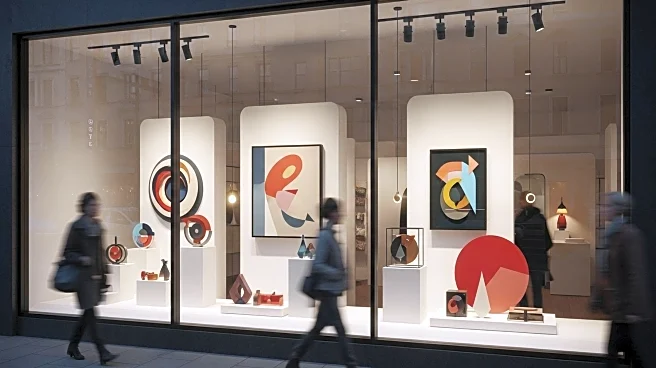What's Happening?
Retailers are increasingly focusing on the design of window displays to attract customers and drive sales. Effective window displays serve as a powerful brand statement, capturing foot traffic and showcasing new products. The guide emphasizes the importance of storytelling, theme selection, and visual balance in creating engaging displays. Retailers are also integrating technology, such as QR codes and augmented reality, to enhance interactivity and connect with customers. Seasonal and thematic displays are used to align with current trends and consumer interests, while minimalist and luxury displays highlight product quality.
Why It's Important?
Window displays are crucial for brick-and-mortar retailers to differentiate themselves in a competitive market. By creating visually appealing and interactive displays, retailers can increase foot traffic and sales, enhancing their brand image. The integration of technology in displays offers a seamless connection between online and offline shopping experiences, catering to tech-savvy consumers. This approach not only boosts immediate sales but also strengthens long-term customer engagement and loyalty, which is vital for sustaining business growth in the retail sector.
What's Next?
Retailers are expected to continue innovating their window display strategies, incorporating more advanced technologies and creative designs. As consumer preferences evolve, displays will likely become more personalized and interactive, leveraging data analytics to tailor experiences. Retailers may also explore collaborations with artists and influencers to create unique displays that resonate with their target audience. The ongoing adaptation to market trends and consumer behavior will be key in maintaining relevance and competitiveness.
Beyond the Headlines
The focus on window displays reflects broader shifts in retail strategies, emphasizing experiential shopping and brand storytelling. This trend highlights the cultural and psychological aspects of consumer behavior, where visual appeal and emotional connection play significant roles in purchasing decisions. Retailers are increasingly aware of the ethical implications of their displays, such as sustainability and community engagement, which can influence public perception and brand reputation.











